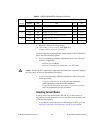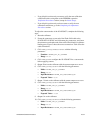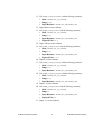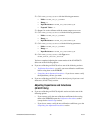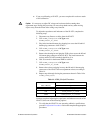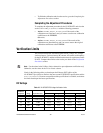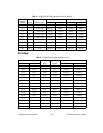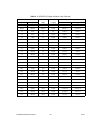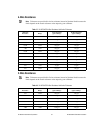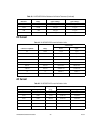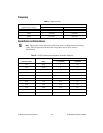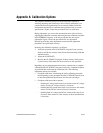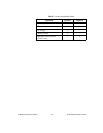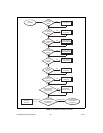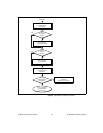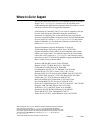
NI 4070/4072 Calibration Procedure 64 ni.com
Appendix A: Calibration Options
The complete calibration process for the NI 4070/4072 consists of
verifying, adjusting, and reverifying a device. During verification, you
compare the measured performance to an external standard of known
measurement uncertainty to confirm that the product meets or exceeds
specifications. Figure 4 shows the procedural flow for verification.
During adjustment, you correct the measurement error of the device by
adjusting the calibration constants and storing the new calibration constants
in the EEPROM. Frequency is the only mode that does not require
adjustment. Figure 5 shows the procedural flow for adjustment.
Reverifying all modes after adjustments ensures that the adjustment
procedures were performed correctly.
Normally, the calibration sequence is as follows:
1. Verify the operation of the NI 4070/4072 using the 2-year accuracy
limits (or the 90-day accuracy limits if it has been externally calibrated
within that time).
2. Adjust the NI 4070/4072.
3. Reverify the NI 4070/4072 using the 24-hour accuracy limits (or the
2-year accuracy limits when the 24-hour limits are not specified).
Depending on your measurement and accuracy requirements, a complete
calibration of the NI 4070/4072 may not be necessary. A number of options
are available that can shorten the calibration time. The following
adjustment options are available:
• Complete calibration—Performing the entire calibration procedure
from beginning to end; guarantees that the NI 4070/4072 performs at
or above the published specifications for all modes and ranges
• Complete calibration with exceptions:
– Omitting AC voltage mode steps if you do not use the AC voltage
modes or if the AC voltage accuracy is irrelevant
– Omitting DC/AC current mode steps if you do not use the current
modes or if the DC/AC current accuracy is irrelevant
– Omitting both AC voltage and DC/AC current mode steps if you
do not use those modes or if the accuracy of those measurements
is irrelevant



